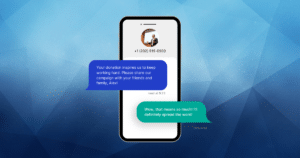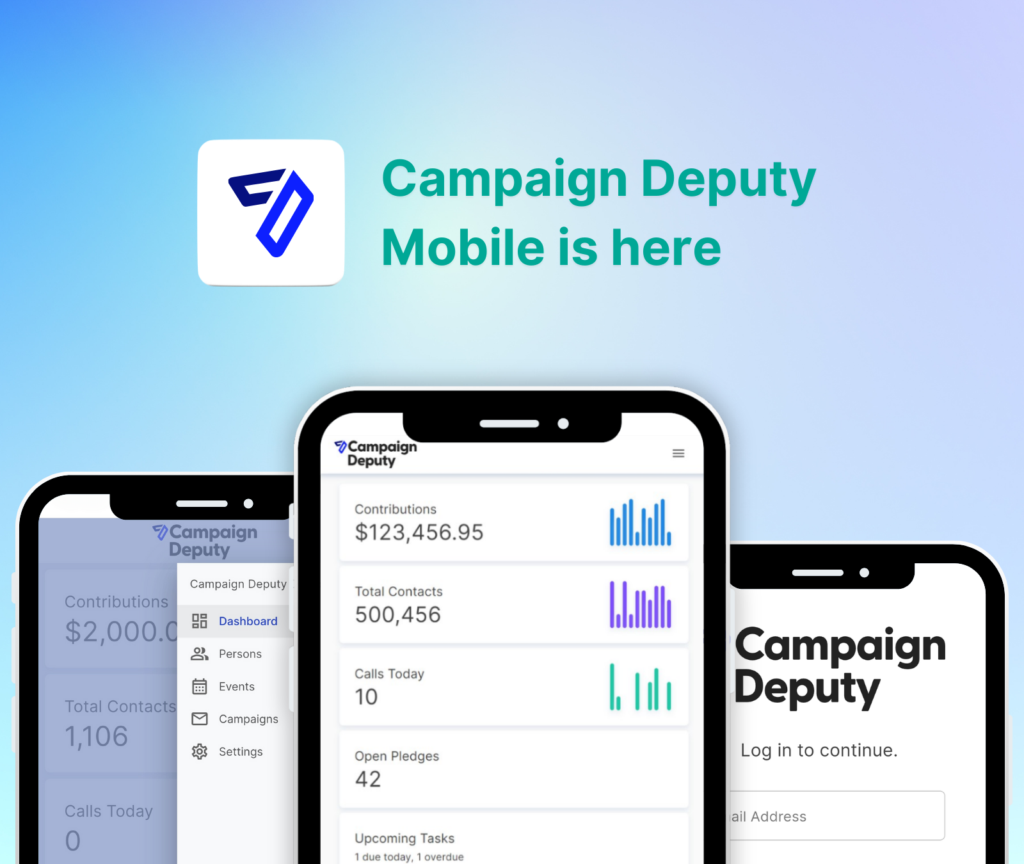In the digital age, political campaigns have become increasingly reliant on email marketing to reach and engage potential voters. Email marketing offers a cost-effective and efficient way to communicate with supporters, raise funds, and share important campaign updates. However, to maximize the impact of your email marketing efforts, it is crucial to follow best practices that can help you stand out in a crowded inbox and connect with your audience effectively. In this article, we will explore some key best practices for email marketing in political campaigns.
Build a Quality Email List
- Starting from Scratch/Finding New Leads: Ensure supporters can easily join your email list by strategically placing eye-catching email sign-up forms throughout your website and/or social media. Consider placing these forms “in your bio” or on the homepage, footer, and other heavily visited pages to maximize visibility and encourage sign-ups.
- Begin with your existing network (if you have one): Begin by contacting your existing contacts, including volunteers, donors, and supporters.
- Segment your list: Divide your email list into different segments based on relevant criteria such as demographics, interests, and past engagement to send targeted and personalized content.
Craft Compelling Subject Lines
- Grab attention: Use concise and attention-grabbing subject lines that pique curiosity and entice recipients to open your emails.
- Personalize when possible: Incorporate the recipient’s name or location in the subject line to make it more personalized and relevant.
- Avoid spam triggers: Steer clear of spam trigger words and avoid using excessive capitalization or exclamation marks.
Create Engaging and Relevant Content
You want your emails to be skimmable so supporters can easily identify the key points of your message without being overwhelmed with a giant block of text. Some campaigns will use bold or highlighted font, graphics, or other tactics to call attention to these main points.
- Know your audience: Understand your target audience’s interests, concerns, and motivations, and tailor your content accordingly. Emails regarding a candidate’s stance on “X” topic are a great way of collecting feedback from your audience and gauging their expectations.
- Tell a story: Use storytelling techniques to create compelling narratives that resonate with your audience and evoke emotions. Describing a candidate’s story and mission is often used as a compelling method of soliciting donations.
- Balance text and visuals: Include a mix of text, images, and videos to make your emails visually appealing and engaging. Oftentimes candidates display their campaign logo across all messaging in order to create recognition and establish an endorsement.
Use Clear and Actionable CTAs
- Keep it simple: Use clear and concise language for your call-to-action (CTA) buttons or links.
- Highlight benefits: Clearly communicate the benefits or impact of taking the desired action to motivate recipients to act.
- Create a sense of urgency: Use time-limited offers or deadlines to create a sense of urgency and encourage immediate action.
Optimize for Mobile Devices
- Mobile-responsive design: Ensure that your emails are optimized for mobile devices, as a significant portion of recipients will access emails on their smartphones or tablets.
- Use a single column layout: Opt for a single column layout to ensure easy readability on smaller screens.
- Keep it concise: Use short paragraphs, bullet points, and subheadings to make your content scannable and digestible on mobile devices.
Test and Revise
- A/B testing: Experiment with different subject lines, content formats, CTAs, and send times to identify what resonates best with your audience.
- Analyze and refine: Regularly analyze email metrics such as open rates, click-through rates, and conversion rates to identify areas for improvement and refine your email marketing strategy.
Comply with Email Laws and Regulations
- Permission-based marketing: Ensure that you have obtained proper consent from recipients before sending them campaign emails. To safeguard against spam and ensure that only genuinely interested supporters receive emails, some campaigns utilize a double opt-in process. Following an initial opt-in, supporters receive a confirmation email containing a link to reaffirm their subscription. This two-step approach effectively eliminates invalid email addresses, nonexistent domains, and uninterested individuals, ensuring that emails reach the intended audience and maintain a high deliverability rate.
- Include an unsubscribe option: Provide a clear and easy-to-use unsubscribe option in every email to comply with anti-spam regulations.
- Be transparent: Clearly identify the sender and provide contact information to build trust and credibility with recipients.
A Note on Email Deliverability
Email deliverability plays a crucial role in the success of any email marketing campaign or business communication. It ensures that your emails reach the intended recipients’ inboxes rather than being flagged as spam or ending up in the dreaded “Promotions” or “Junk” folders. To improve email deliverability, it is essential to understand and implement protocols such as DKIM, SPF, and DMARC properly.
Apart from implementing DKIM, SPF, and DMARC, there are other strategies to improve email deliverability. Building a healthy email list, crafting compelling email content, and engaging with subscribers can further enhance the chances of your emails reaching the inbox and driving desired actions.
Personalize and Automate
- Dynamic content: Leverage personalization tags to dynamically insert recipients’ names, locations, or other relevant information into your emails.
- Acknowledge Previous Engagement: Mention actions that your recipient has already taken with your campaign. Whether they attended an event, volunteered, or donated, acknowledging their past engagement shows that you value their support and commitment.
- Automate campaigns: Use email marketing automation tools to schedule and send emails based on predefined triggers or actions, such as sign-ups or donations.
Monitor and Engage with Recipients
- Monitor replies and feedback: Regularly check and respond to replies and feedback from recipients to foster engagement and build relationships.
- Encourage two-way communication: Encourage recipients to reply to emails, ask questions, or share their opinions to foster a sense of involvement and community.
Complement with Other Channels
- Integrate with social media: Cross-promote your email content on social media platforms to expand your reach and engage with a larger audience.
- Use SMS marketing: Supplement your email marketing efforts with SMS marketing to reach supporters who may prefer text messaging.
Conclusion
Email marketing is a powerful tool for political campaigns to connect with supporters, mobilize voters, and raise funds. By following these best practices, you can optimize your email marketing efforts and increase your chances of success. Remember to build a quality email list, craft compelling subject lines, create engaging content, use clear and actionable CTAs, optimize for mobile devices, test and optimize, comply with email laws, personalize and automate, monitor and engage with recipients, and complement with other channels. With a well-executed email marketing strategy, you can effectively communicate your campaign’s message and drive meaningful engagement.
FAQs
Q: How often should I send campaign emails?
A: The frequency of campaign emails may vary depending on the stage of your campaign and the preferences of your audience. Aim for a balance between staying top-of-mind and avoiding email fatigue. Test different frequencies and monitor engagement metrics to find the optimal frequency for your campaign.
Q: Can I use email marketing for fundraising?
A: Absolutely! Email marketing is an effective fundraising tool for political campaigns. Craft compelling donation appeals, highlight the impact of contributions, and provide easy-to-use donation links or buttons in your emails to encourage supporters to contribute.
Q: Should I purchase email lists for my campaign?
A: It is strongly advised against purchasing email lists. Not only can it damage your campaign’s reputation, but it may also violate anti-spam regulations. Focus on building an organic and engaged email list through opt-ins and other legitimate methods.
Q: How can I measure the success of my email marketing campaigns?
A: Key metrics to track include open rates, click-through rates, conversion rates, and the number of unsubscribes. Compare these metrics over time and use A/B testing to identify what resonates best with your audience.





